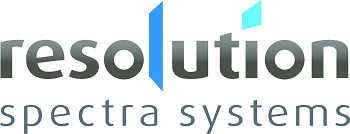SWIFTS™, or Stationary-Wave Integrated Fourier Transform Spectrometer, is an integration of landmark nanotechnologies, integrated optics, microelectronics and advanced data computing.
It results in high-resolution spectrometer technology bundled into one device, which is over 100 times more powerful with regards to spectral resolution when compared to current mini-spectrometers and over 2000 times smaller than high-end spectrometers which offer a similar performance level.
Systems which are based on this patented technology can achieve a spectral resolution of a few pm/ 0.2 cm-1 or 6GHz, with a good SNR over a bandwidth that ranges between several nm to a few hundred nm on a chip measuring a few mm.
Basically SWIFTS technology is both an integrated and high-performance solution and not a compromise between the two. A consequence of this high integration degree is the simplicity and robustness of spectrometers based on SWIFTS technology.
SWIFTS Explained
SWIFTS™ is one of the new techniques available for building ultra-small spectrometers that probe an optical standing wave, which is formed by the light to be analyzed. This probing is carried out without the need for moving or scanning parts. The evanescent wave, instead is sampled with nano-scattering dots. Drifting from a scanning system is not just for the sake of robustness and simplicity, it eliminates the calibration issues with regards to moving solutions.
The technology works by conducting probes on an optical standing wave or on the sum total of standing waves if it is polychromatic light, which is formed by the light to be studied, without using moving components. For this the standing wave has to be sampled regularly be extracted a limited quantity of the guided energy quasi-punctually.
The stationary or standing wave is created by a single-mode waveguide ended by a fixed mirror. The energy extraction needed for sampling the standing wave is determined by sampling the evanescent wave on one side of the waveguide with nano-scattering dots, which are present in the evanescent field.
These nanodots scatter the light surrounding an axis perpendicular to the waveguide and are characterized by an optical index difference with the medium in which the evanescent field is located.
This scattered light, for each nanodot is detected by a pixel aligned with this axis. The detected intensity is proportional to the intensity of the waveguide at the exact location of the nanodot.
A Lippman transform, similar to a Fourier Transform is a mathematical function that considers all the calibration data and, when applied to the linear image, offers the spectrum of the light.
The SWIFTS™ principle is a completely patented one and its commercial use is exclusive to RESOLUTION Spectra Systems.
About Resolution Spectra Systems
RESOLUTION Spectra Systems was set up in 2011 to develop an offer based on SWIFTS technology. Its founders are senior engineers, business managers and research scientists from the Joseph Fourier University of Grenoble in France. The company is also based in Grenoble, one of Europe’s leading high-technology centers.
RESOLUTION Spectra Systems is looking to revolutionize the use of spectrometers in the future. A combination of high performance, simplicity and compactness will allow SWIFTS-based spectrometers to be employed in configurations that were impossible for previous generations of spectrometer, opening up the use of high-performance spectroscopy to mainstream applications and enabling its integration with new or existing technologies.
The core benefits of SWIFTS, its compactness, portability and potential for integration, will provide real answers to current market requirements. This is particularly true for applications that require spectral discrimination with respect to molecular emission and absorption, including process control, laser spectroscopy for the analysis of materials, security and medical applications.
Our supply chain is based on processes developed in-house, but also on a smart scheme that takes advantage of the unique convergence of state-of-the-art technologies and facilities located in the Grenoble Cluster.
RESOLUTION Spectra Systems is developing several families of off-the-shelf spectrometers and is focusing its R&D efforts on tailoring solutions to applications that require a high level of performance, compactness, portability or simplicity.
RESOLUTION Spectra Systems is not only a powerful technology developer, it is also resolutely focused on serving customers and responding to their needs.

This information has been sourced, reviewed and adapted from materials provided by Resolution Spectra.
For more information on this source, please visit Resolution Spectra.